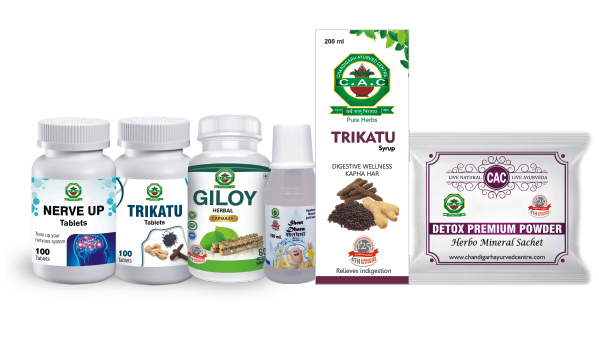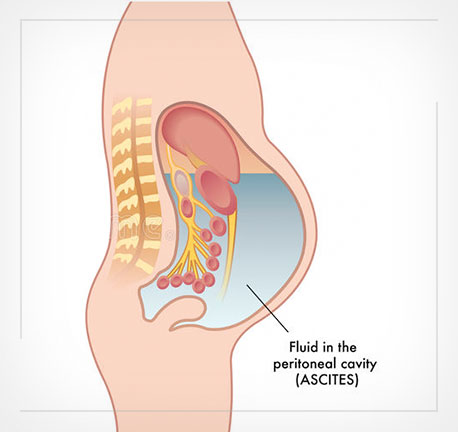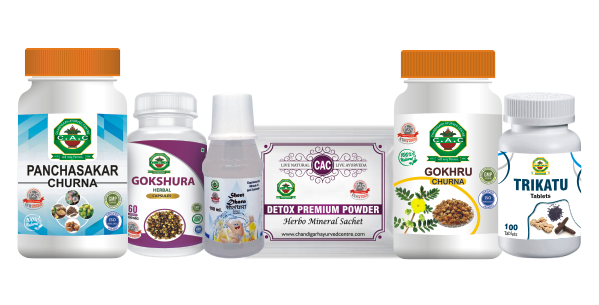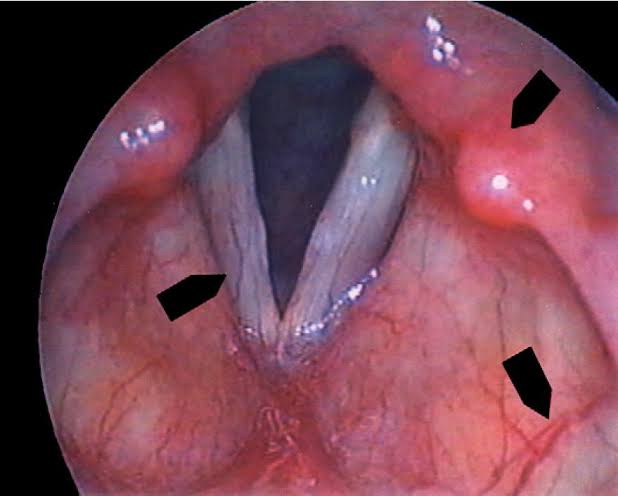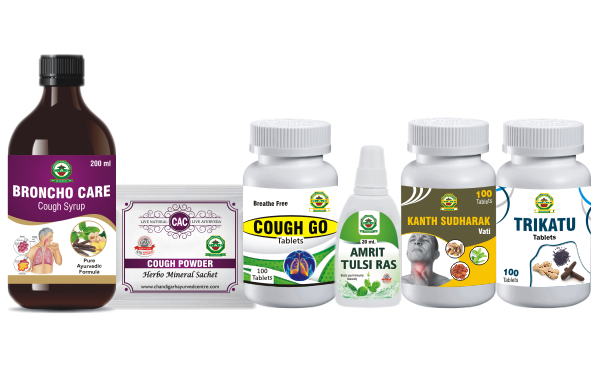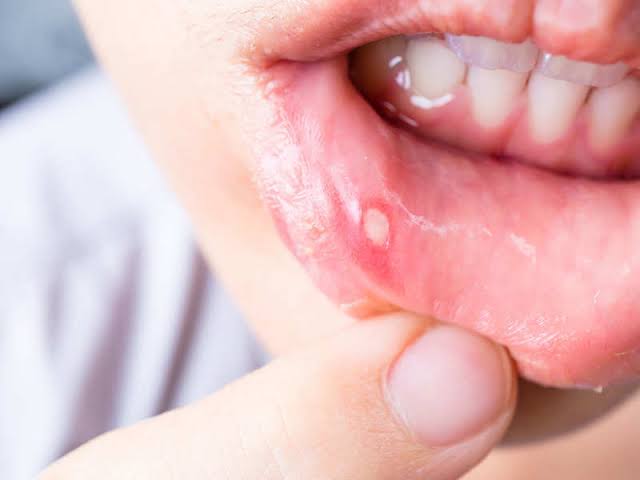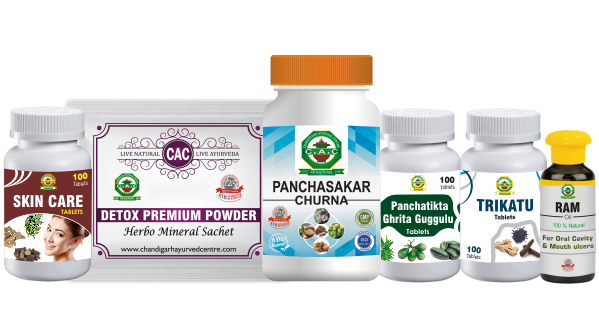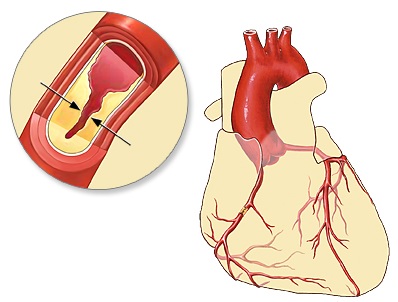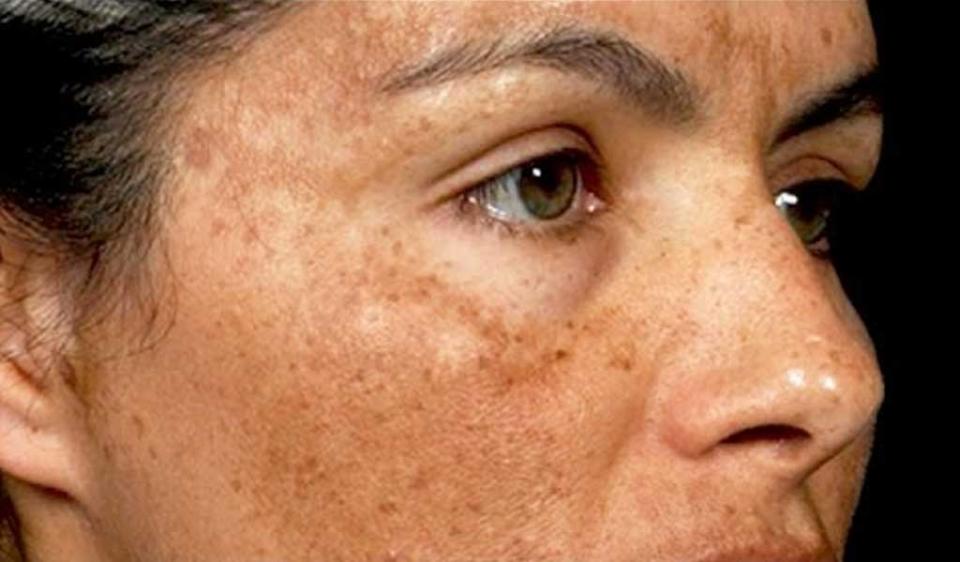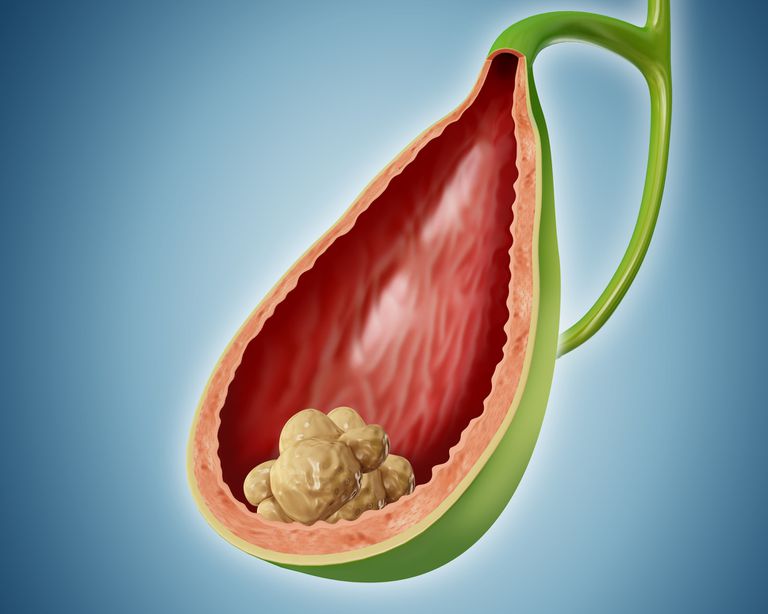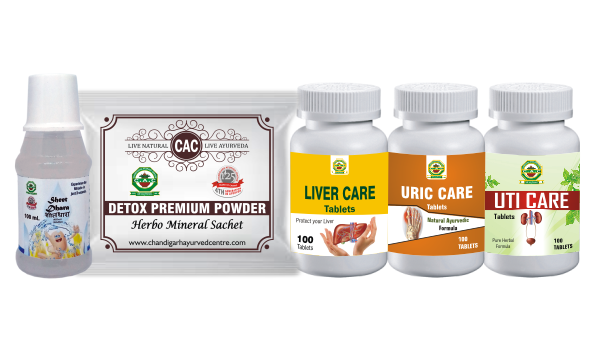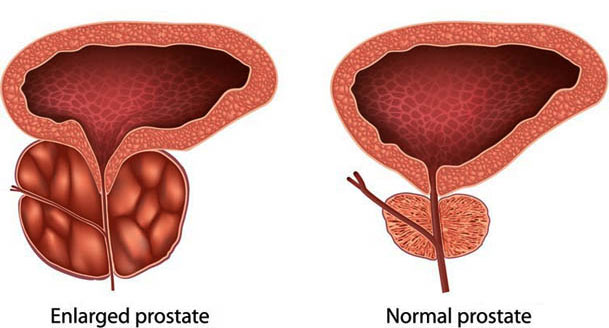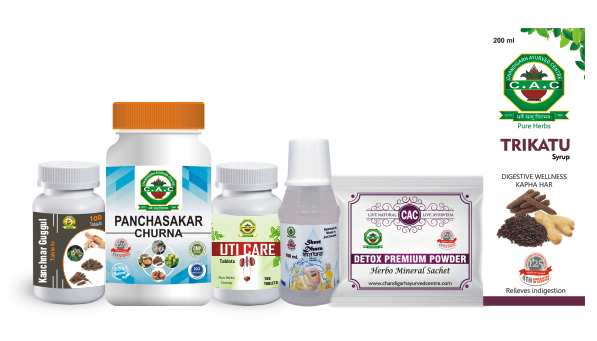Author Archives: Dr. Vaidya Karanvir Singh
Food Poisoning
- November 4, 2019
- Posted by Dr. Vaidya Karanvir Singh
- 0 Comment(s)
Food poisoning is an illness that is caused by foodborne illness. It may result due to eating contaminated food & drinking infected water that is caused due to harmful viruses, bacteria, or parasites. These bacteria’s, viruses, or parasites when enter the body creates toxin in the body that results in food poisoning. At home contamination of the food also take place due to incorrectly handled or cooked food.
What are the signs & symptoms of food poisoning?
The signs & symptoms of food poisoning that are commonly seen in a person dealing with food poisoning are:
- Vomiting
- Nausea
- Sometimes watery or bloody diarrhea
- Abdominal pain
- Abdominal cramps
- Fever
- Dizziness
- Severe weakness
- Dry mouth
- Excessive thirst
- Little or no urination
- Muscle weakness
- Tingling sensation in the arms
- Blurred vision
- Lightheadedness
- Sometimes bloody stools or vomit
- Bloating
- Gastric problem
- Headache
What are the causes of food poisoning?
The different causes of food poisoning are mentioned below in detail:
1) Viruses: When food poisoning is caused due to virus that is transmitted through food. The different viruses such as norovirus, sapovirus, rotavirus, & astrovirus are responsible for it.
2) Bacteria: The most common dangerous bacteria are E.coli, Salmonella, Listeria, & Campylobacter. These bacteria cause severe food poisoning in the patients.
3) Parasites: Toxoplasma is the parasite that is commonly responsible for food poisoning. It makes your immune system weak.
What is the Ayurvedic point of view for food poisoning?
According to Ayurveda, micro-organism is responsible for food poisoning that causes infectious diseases. There are three main doshas vata, pitta, & kapha that are responsible for this illness. It can be compared with aalsak & visuchika as per Ayurved.
What is the Ayurvedic treatment for food poisoning?
Ayurveda gives the best treatment to the food poisoning patients as it helps in overall detoxification of the body. All three doshas (Vata, Pitta, & Kapha) are responsible for this situation. So it’s important to balance these doshas. Chandigarh Ayurved Centre introduces a kit known as “Food Poisoning Care Kit” that will help you out.
ALL PRODUCTS DESCRIPTION IN DETAIL:
All products description in detail:
1) Detox Premium Powder:
Detox premium powder is a herbo-mineral preparation with ingredients like moti pishti, parwal pishti, shukta pishti, giloy satav, akik pishti, gandhak rasayan, tal sindoor, shankh bhasam, sudhyog tab, shwet parpati, yavakshaar. These ingredients help in detoxification of the body for removing all toxins in a food poisoning patient.
Recommended dosage: Take 1 sachet twice daily with normal water.
2) Sheet Dhara Syrup:
Sheet Dhara Syrup is a pure herbal preparation containing ingredients like ajwain satv, peppermint, mushak kapoor. This herbal syrup deals with problems like nausea, vomiting, loss of appetite, abdominal cramps, etc associated with this syrup.
Recommended dosage: Take 1/2 teaspoonful with a half cup of water.
3) Trikatu Syrup:
Trikatu syrup is formulated with the ingredients such as Long Pepper (Piper longum), Black Pepper (Piper nigrum), & Ginger (Zingiber officinale). These ingredients show antioxidant, anti-inflammatory, analgesic, digestive, & carminative properties. All these properties give effective results in food poisoning patients.
Recommended dosage: Take 2 teaspoonful thrice daily before meals.
4) Trikatu tablet:
Trikatu tablets are pure herbal preparation containing herbs like Black pepper (Piper nigrum), Ginger (Zingiber officinale), & Long pepper (Piper longum). These ingredients give effective results in abdominal pain, cramps, nausea, vomiting, loss of appetite, etc associated with the food poisoning patients.
Recommended dosage: Take 1 tablet twice daily with normal water.
5) Giloy Capsule:
Giloy capsule is prepared from the standardized extract of herb Giloy (Tinospora cordifolia). This herb shows antioxidant, anti-inflammatory, antipyretic, analgesic, digestive, & immuno-modulator properties. These properties give effective results in weakness, loss of appetite, headache, abdominal cramps, mild fever, dry mouth, etc.
Recommended dosage: Take 1 capsule twice daily with normal water.
6) Nerve up tablet:
Nerve up tablets help in balancing the vata dosha and kapha dosha, and acts as nervine stimulant. It shows effective results in improving the central nervous system. It contains natural ingredients like shudha kuchala, shudha shilajeet, abhrak bhasma, praval pishti, shankh bhasma etc. This tablet helps in the symptoms related to Food poisoning like abdominal pain, abdominal cramps, & difficulty in passing urine.
Recommended dosage: Take 1 tablet twice daily with normal water.
What is the Panchakarma treatment for Food poisoning patients?
Ayurvedic treatment for food poisoning gives fruitful & effective results for the patient. But if a patient is not getting treated properly then you can use a few of the panchakarma treatment for good results that are given below:
1) Nabhi vasti: In this procedure, a ring is formed around the navel area with the help of kneed flour. After that lukewarm oil is put in three to four times with the help of a sponge. It will help in reducing abdominal pain & abdominal cramps related to food poisoning patients.
2) Anuvasan vasti: In this panchakarma procedure, medicated oil is administered in patient through the anal region for removing toxins out from the body.
3) Niruha vasti: In this procedure, herbal enema prepared with herbs are administered in patient through anal region for overall detoxification of the body.
Healthy tips & Lifestyle for Food poisoning patients:
The patients dealing with food poisoning situation should follow healthy tips & lifestyle that are given below:
1) Always consume fresh & well-cooked food.
2) Keep your utensils clean before cooking food or eating food.
3) Don’t preserve cake, breads, & milk products for a long time.
4) Cook seafood & meat for preventing it from germs like bacteria, virus, or parasite.
5) Don’t use oil that is left after cooking as it is not good for health.
6) Avoid using the seal, processed, & canned food items as it is affected by the bacteria, viruses, & parasites.
7) If you have used any utensil for cooking non-vegetarian diet, then don’t use it again as it can food poisoning. Wash the utensil & use it after that.
8) Properly clean your refrigerator so that there should not be growth of micro-organism in it.
9) Don’t keep your food at room temperature for more than 2 to 3 hours as it can get contaminated with the bacteria, virus, or parasite.
10) Always clean your fruits & vegetables with filtered water before using it.
Ascites
- November 4, 2019
- Posted by Dr. Vaidya Karanvir Singh
- 0 Comment(s)
What is the Ayurvedic and Panchakarma Treatment for Ascites?
When there are more than 25 ml of fluid in the peritoneal cavity it leads to a condition known as ascites. Most commonly, ascites is due to a liver disease that is caused by enough protein to retain fluid in the bloodstream, it causes obstruction to flow scarred cirrhotic liver.
What are the Causes of Ascites?
The different causes of ascites are as follows:
- Pancreatitis
- Liver cirrhosis is the most common cause
- Abdominal carcinoma
- Abdominal tuberculosis
- Hypothyroidism
- Renal dialysis
- Pericarditis
- Vasculitis
- Peritoneal mesothelioma
- Congestive heart failure
What are the Signs and Symptoms of Ascites?
Excess fluid accumulation causes increased abdominal size which is related to the following signs & symptoms of ascites:
- Shortness of breath
- Fatigue
- Nausea
- Abdominal bloating
- Abdominal discomfort
- Abdominal pain
- Backache
- Constipation
- Loss of appetite
- Nausea or vomiting
- Indigestion
What is an Ayurvedic View of Ascites?
In Ayurveda, ascites can be correlated with jalodara a type of udararoga (Disease of the abdomen). There is the aggravation of vata dosha in ascites which gets accumulated in udar (abdomen) between twaka (skin) and mamsa (muscles) which leads to abdominal swelling.
What is the Ayurvedic Treatment of Ascites?
In Ayurvedic treatment for ascites, pure herbal medicines to improve digestion. The Ayurvedic treatment gives relief without any side effects.
Chandigarh Ayurved Centre provides the best natural way to cure ascites by using “Ascites Care Kit”. This kit contains ayurvedic herbs which improve digestion and balances the aggravated levels of vata dosha. This kit contains 5 products – Gokhru capsules, Detox Premium Powder, Yakrit Vati, Sheet dhara syrup, Trikatu tablets, Gokhru churna.
ALL PRODUCTS DESCRIPTION IN DETAIL:
1. Gokhru Capsule:
Gokhru capsule is pure ayurvedic medicine which is very effective in ascites as it has anti-inflammatory properties that reduce the swelling of the abdomen. It also acts as diuretic which causes increased urine secretion from the body and removal of all the toxins. These capsules contain pure extract of Gokshura (Tribulus terrestris).
Recommended Dosage: Take one capsule twice daily with normal water.
2. Detox Premium Powder:
Detox premium powder contain various herbo-mineral ingredients. This herbal powder is prepared from Moti pishti, Prawal pishti, Shukta pishti, Giloy satva, Kamdudha ras, Jahar mohra, Akik pishti, Gandhak rasayan, Tal sindoor, Shankh bhasm, Sutshekhar ras, Sudhyog tab, Shwet parpati, Yavakshaar. This herbal powder helps in the removal of toxins from the whole body, strengthens the body, and helps in maintaining general health.
Recommended Dosage: Take one sachet twice daily with normal water.
3. Panchsakar Churna:
This churna is very effective for constipation patients as it shows antioxidant, anti-inflammatory, laxative, & analgesic properties. It is a classical herbal churna prepared from ingredients like Shatapushpa, Balaharitaki, Shunthi, Swarnapatri, & Saindhav lavana. It helps in removing all toxins from the body & provides good results in constipation. All signs & symptoms related to constipation are treated with the regular use of this churna.
Recommended Dosage: Take 1 teaspoonful at bedtime with warm water.
4. Sheet Dhara Syrup:
This herbal syrup improves appetite, reduces hyperacidity, improves digestion, and helps in maintaining overall health. Sheet dhara syrup is herbal formula prepared from ajwain satav, peppermint, & mushak kapoor.
Recommended Dosage: Take a half teaspoon in a half cup of water twice daily on an empty stomach.
5. Trikatu Tablet:
Trikatu tablets are mixture of three herbs which are Saunth (Zingiber officinale), Marich (Piper nigrum), Pippali (Piper longum). These tablets improve digestion, boost your metabolism, helps in eliminating fat tissues and kapha dosha, support respiratory functions, and remove impurities and ama from the body.
Recommended Dosage: Take one tablet twice daily with normal water.
6. Gokhru Churna:
Gokhru churna is the single herbal powder that contains the pure extract of herb Gokshura. This powder act as a diuretic, decreases inflammation, used in renal calculi, & urinary tract infections.
Recommended Dosage: Take one teaspoonful twice daily with normal water.
What is the Panchakarma Treatment in Ascites?
Chandigarh Ayurved Centre offers effective ways to treat ascites through Ayurvedic medicines & Panchakarma procedures. The different Panchakarma procedures that are recommended in ascites are Patra potli pind sweda, Niruh vasti, and Anuvasana vasti that are done by the experienced therapist & gives effective results.
- Patra potli pinda sweda: It is a method of providing heat by using leaves of medicinal plants. In this therapy, medicated leaves are tied in bolus that are dipped in herbal oil after that it is heated. This lukewarm bolus is applied over the whole body. Patra potli pinda sweda procedure provides relief from pain, stiffness, inflammation, & improves circulation.
- Niruh vasti: Niruh vasti is the procedure of giving enema using herbal decoction. Niruh vasti helps in cleansing the body, balances the body’s metabolism, provides strength, improves complexion. It helps in removing extra fluid & toxins out from the body.
- Anuvasana vasti: Anuvasana vasti is enema in which herbal medicated oil or ghee is used to administer through anal route. This vasti nourishes the body, provides lubrication to the body, improves digestion, beneficial in chronic constipation, deal with distension of abdomen and backache.
Healthy Tips and Diet for Ascites
Here are some of the healthy tips & diets that are beneficial for ascites patients. These tips give good & effective results that are mentioned below in detail:
- Stop drinking alcohol.
- Limits the amount of fluid intake.
- Limit your daily intake of salt.
- Use ginger as it is a great herb that helps in the process of digestion and helps to remove the feeling of abdominal discomfort.
- Drink garlic juice mixed in water as it helps to cure ascites.
- Drink fresh bitter gourd juice mixed in water thrice daily.
- Crush fennel seeds and boil in hot water. Fennel seeds contain oils that reduce inflammation and bacteria causing bloating.
- Eat healthy food & avoid processed, fried, & stale food.
- Take diuretics like gokshura, punarnava, arjuna which helps to reduce the excess fluid in your body.
- Exercise daily as this helps in developing abdominal muscle.
Chronic Laryngitis
- November 4, 2019
- Posted by Dr. Vaidya Karanvir Singh
- 0 Comment(s)
Laryngitis is known as inflammation of the larynx. Symptoms of Laryngitis may include a hoarse voice, fever, cough, pain in front of the neck. It is categorized as acute if it lasts less than three weeks and chronic if symptoms last more than three weeks. Acute cases occur as viral upper respiratory tract infection. Chronic Laryngitis cases occur due to smoking, tuberculosis, allergies.
What are the Signs and Symptoms of Chronic Laryngitis?
The signs & symptoms related to chronic laryngitis are:
- hoarse voice
- dry or sore throat
- coughing
- frequent throat clearing
- increased saliva production
- dysphagia
- the sensation of swelling in the larynx region
- cold or flu
- a feeling of lump in the throat
- swollen lymph nodes in throat, chest, face
- fever
- general muscle pain
- shortness of breath
- changes in pitch and volume of voice
What are the Causes of Chronic Laryngitis?
Chronic laryngitis can be infectious as well as non-infectious in the origin. It generally develops in response to either an infection, trauma to vocal folds or allergies. It may also be caused by more severe problems such as nerve damage, sores, polyps, hard, and thick lumps on the vocal cords. Acute laryngitis is caused due to bacterial, viral, fungal infection and trauma. Chronic laryngitis is caused by allergies, reflux, & auto-immune disorders.
Ayurvedic view of Chronic Laryngitis?
In Ayurveda, chronic laryngitis is correlated with “Svar bheda”. It is the disease of pranavaha srotas (respiratory system), caused due to vitiation of vata and kapha dosha affecting the rasa dhatu.
What is an Ayurvedic Treatment of Chronic Laryngitis?
In Ayurveda, there is an effective & best treatment for chronic laryngitis. Chandigarh Ayurveda center provides the best way to cure chronic laryngitis by using “Chronic laryngitis go kit”. The kit contains six products- Cough powder, Cough go tablet, Kaphaketu rasa, Kantha sudharak vati, Amrit Tulsi Rasa.
All products description in detail:
1. Cough Powder
Chandigarh Ayurved Centre Detox premium powder is safe and natural. The herbs & minerals used for the preparation of this churna show antioxidant, anti-inflammatory, expectorant, immuno-modulator properties. The different ingredients used for its preparation are Talisaadi Churna, Abhrak Bhasam, Lakshmi vilas ras, Yashti madhu churna, etc. It provides effective result in chronic laryngitis.
Recommended dosage: Take 1 sachet twice daily with honey.
2. Broncho care syrup:
Broncho care is ayurvedic syrup containing ingredients such as Vasa patra (Adhatoda vasica), Kantkari (Solanum surattense), Mulethi (Glycyrrhiza glabra), Bharangi (Clerodendrum serratum), Chitrakmool (Plumbago zeylanica), Sonth (Zingiber officinale), Pippali (Piper longum), etc. It is mainly used in chronic cough, bronchitis, whooping cough, chronic laryngitis, common cold, etc.
Recommended Dosage: Take 2 teaspoonful twice a day.
3. Cough go Tablet
Cough go tablets consists of ingredients like Sonth (Zingiber officinale), Mulethi (Glycyrrhiza glabra), Pippali (Piper longum), Kali mirch (Piper nigrum), Laxmi vilas rasa, Abhrak bhasam, Tankan bhasma. It has anti-inflammatory, anti-allergic, immuno-modulator properties thus widely used in respiratory disorders, throat problems, cold, cough, & chronic laryngitis.
Recommended dosage: Take a tablet twice a day with lukewarm water.
4. Amrit tulsi Rasa
Amrit tulsi rasa consists of five types of Tulsi Ocimum sanctum, Ocimum gratissium, Ocimum canum, Ocimum basilicum, Ocimum citriodorum as main ingredients. It shows antioxidant, anti-aging, anti-bacterial, anti-viral, antiseptic, anti-flu, anti-biotic, anti-inflammatory, anti-toxin properties thus widely used in chronic laryngitis.
Recommended dosage: Take two drops in half cup of water twice a day.
5. Kantha Sudharak Vati
The ingredients used for the preparation of the Kantha sudharak vati are Mulethi (Glycyrrhiza glabra), Karpura (Cinnamomum camphora), Ela (Elettaria cardamomum), Lavang (Syzygium aromaticum), Javitri (Myristica fragrans), Ajwain (Trachyspermum ammi).
This is prepared from soothing and expectorant herbs thus relief all throat problems. It gives very effective results in chronic laryngitis.
6. Trikatu Tablet:
Trikatu Tablet helps to eliminate excess Kapha or mucous from the body, supports respiratory system, helps to take out impurities, reduces swelling. It shows anti-inflammatory, analgesic, expectorant, antioxidant properties. This tablet is made up of equal parts of three herbs such as Pippali (Piper longum), Shunthi (Zingiber officinale), & Marich (Piper nigrum) that maintains the metabolism in the body. It is an Appetizer and it improves digestion, supports normal gastric function, and normal circulation.
Recommended Dosage: Take 1 tablet twice a day.
What is the Panchakarma Treatment in Chronic Laryngitis?
According to Ayurveda, the accumulation of Vata and Kapha in the respiratory tract and the digestive system are responsible for breathing problems. Panchakarma therapies are very effective in cleansing the body toxins and removing doshas which clears up any obstruction in the respiratory Channels.
Chandigarh Ayurved Centre provides the best Panchakarma treatment for chronic laryngitis. Following therapies are recommended :
1.Shastika Ahali Pinda Sweda
In this procedure, the Shastika shali rice is cooked in kwatha & dugdha. The pottalis are prepared with these ingredients. After that, with the help of these pottalis the patient affected area is massaged. This procedure balances the kapha and pitta dosha.
2. Patra Potali Pinda Sweda
In this procedure, we heat or oil fry the leaves of the medicinal plant tied in a bolus to provide heat to the affected area of the body parts. Thus accumulated kapha removed from the body and also balances the vitiated vata dosha.
3.Urobasti:
In this procedure, medicated oil is retained on the chest wall which gives a positive influence on the heart chakra which in turn has a beneficial effect on the mind and gives strengthening effect to the heart muscle. This therapy nourishes, strengthens, balances heart function, and rejuvenates the heart. This procedure specially helps in all respiratory tract problems.
Healthy Tips & Diet in Chronic Laryngitis
- Avoid cold and damp places.
- Go for morning and evening walk for at least 30 minutes.
- Avoid tobacco, wine, smoking, overeating.
- Keep rooms well ventilated.
- Avoid perfumes, incense sticks, mosquito repellants
- Drink plenty of water.
- Eat foods with omega-3 fatty acids, which are found in fish like salmon, sardines and some plant sources like, flaxseed- are believed to have a number of health benefits.
- Eat plenty of fruits and vegetables.
- Yoga improves the strength, flexibility, and capacity of the lungs, the three necessary components of overall fitness. Yoga therapy improves lung functions and reduces the frequency of exacerbations. It emphasizes conscious breathing and includes relaxation. The yoga poses beneficial in chronic laryngitis are Shirshasana, Dhanurasana, Chakarasana, Bhujangasana, Suptavajrasana, etc.
Miscarriage
- November 4, 2019
- Posted by Dr. Vaidya Karanvir Singh
- 0 Comment(s)
Ayurvedic Treatment for Miscarriage
Pregnancy occurs when an egg is fertilized by male sperm and travels down a fallopian tube into the womb or uterus. When the fertilized egg is unable to survive a full term, which is 40 weeks, then this condition is called miscarriage. Miscarriage is defined as a situation of loss that occurs during the first 20 weeks of pregnancy. Maximum chances of miscarriages happen during the first 13 weeks of pregnancy.
The conditions of miscarriages that occur after the first half of pregnancy are called preterm deliveries. In about 15 to 20% of pregnancies there are maximum chances of miscarriage. The widespread popularity of at-home pregnancy tests (and early pregnancy confirmation) has caused miscarriage rates to rise to a level higher than previously believed.
What is a miscarriage?
A miscarriage happens when a pregnancy stops growing and it is mostly found in women who have bleeding in early pregnancy, or it may be found during routine tests. Miscarriage happens in those pregnancies that would not have been healthy for various reasons. It is not caused due to stress or any regular activities like playing sports or having sex.
What are the complications of miscarriage?
Incomplete miscarriage:
After the miscarriage, the tissues remain in the uterus from pregnancy. Bleeding is one of the main symptoms of this problem. It gets resolved on its own or in case of excessive bleeding it requires proper medical treatment.
Excessive bleeding:
Hemorrhage or excessive bleeding is the complication associated with miscarriage and the excess bleeding occurs which is dangerous.
Infection:
In some of the cases, women are more prone to infection and symptoms may have a high fever, cramping, and bleeding.
Asherman syndrome:
In Asherman syndrome, there is the formation of scar tissues (adhesion) in the uterus. This adhesion may cause infertility and increases the chances of a further miscarriage.
Miscarriage also affects mental health which leads to depression and anxiety.
Common symptoms of miscarriage are:
- Abdominal, pelvic or lower back pain, which may be severe.
- Bleeding, spotting, nausea, cramping, and pelvic pain.
- Heavy cramping accompanied by bleeding or discharge.
Serious symptoms of miscarriage are:
Miscarriage can be life-threatening in some cases, especially if there is an infection.
- Heavy cramping
- Severe abdominal or low back pain
- Uncontrolled or heavy bleeding, hemorrhage
What are the causes of miscarriage?
It is not known exactly what causes miscarriage, although many theories exist. Exposure to toxicities such as pollution, drugs or alcohol, chemicals, gynecologic conditions, autoimmune diseases, smoking, obesity, diabetes, and genetics are the main causes of miscarriage.
In some cases early-term miscarriages are caused by chromosomal defects, past history of endometriosis (the abnormal growth of uterine cells outside the uterus), sexually transmitted diseases, cyst of ovaries can affect pregnancy. A cervix that opens too early can disturb pregnancy.
What are the risk factors for miscarriage?
Factors that increase the risk of miscarriage are given below in detail-
- Age over 35 years
- Alcohol consumption
- Excessive BMI (low or high)
- Exposure to radiation or toxins
- Fever
- Folate acid deficiency
- History of previous miscarriages
- Multiple previous pregnancies (multiparity)
- Smoking
- Substance abuse
Things to be avoided –
- Avoid alcohol or illegal substances
- Avoid smoking
- Seeing your health care provider regularly if you are pregnant
What is the Ayurvedic view of miscarriage?
In Ayurveda, miscarriage is correlated to “Garbh satrav” mainly vata dosha is imbalanced in the body as compared to the other two (pitta & kapha). This mainly happens due to your wrong lifestyle & eating habits.
What is the ayurvedic treatment of miscarriage?
Ayurveda provides the best treatment for miscarriage patients as it balances the dosha & manage the condition properly. It deals with the signs & symptoms related to miscarriage patients. Chandigarh Ayurved Centre introduces a kit for women dealing with miscarriage situation known as “Miscarriage Care Kit”.
1. STRI POSHAK SYRUP
Stri Poshak Syrup is an Ayurvedic syrup for treating miscarriage that contains natural and pure herbs which mainly balances the Vata and Kapha dosha. The syrup is beneficial in curing a woman’s physical weakness, anemia, amenorrhea, etc. It includes ingredients like – Ashok chall (Saraca asoca), Lodhar chall (Symplocos racemosa), Khadir chall (Acacia catechu), Guduchi (Tinospora cordifolia), Mulethi (Glycyrrhiza glabra), etc. This herbal syrup cures general weakness, abdominal discomfort, mood elevation, excess sweating, tiredness, excessive bleeding, abdominal pain, cramps associated with miscarriage patients.
Recommended Dosage– Take 2 teaspoonful twice daily.
STRI POSHAK CAPSULE–
Stri Poshak Capsule is the herbal remedy for miscarriage which contains– Ashok chall (Saraca asoca), Lodhar chall (Symplocos racemosa), Aamlaki (Emblica officinalis), Nagkesar (Mesua ferrea), etc. that mainly balance the vata & kapha dosha. The capsule is very beneficial in maintaining women’s health and help in regulation of the menstrual cycle. It relieves abdominal pain, excessive bleeding, abdominal cramps, pelvic pain associated with miscarriage patients.
Recommended Dosage – Take 2 capsules twice a day with normal water.
3. FEMINE CARE TABLET-
Femine care tablet is being prepared from several herbs and extracts that provide health benefits naturally. The tablet contains ingredients like Ghritkumari (Aloe barbadensis), Sonth (Zingiber officinale), Muramakki (Commiphora myrrha), etc. It mainly helps in improving the blood circulation, boosts the immune system, prevents abdominal pain, cramps, excessive bleeding, and muscle rupture naturally.
Recommended Dosage – Take 2 tablets twice a day with normal water.
4. DETOX PREMIUM POWDER
Detox premium powder is the mixture of traditional bhasmas that remove the toxins all over the body naturally. As it consists the combination of shukta pishti, giloy satv, parval pishti, gandhak rasayan, kamdudha rasa, etc. The powder is very beneficial in relieving discomfort, pain, numbness, muscle ache, reduces swelling, and inflammation on the pelvic region.
Recommended Dosage – Take 1 sachet twice daily with normal water.
5. VAAT NASHIK VATI
Vaat nashik vati are herbal tablets prepared from ingredients such as jahar mohra pishti, giloy, abhrak bhasma, etc. These herbal tablets balances vata dosha in the body. The signs & symptoms related to miscarriage patients are treated with the regular use of these tablets.
Recommended Dosage: Take 1 tablet twice daily with normal water.
What is the panchakarma treatment for miscarriage?
Along with ayurvedic treatment for miscarriage, there is some panchakarma procedures that will give quick & effective results for miscarriage patients. Here are some panchakarma procedures that are beneficial for miscarriage patients:
- Patra Potli pind sweda-
In this procedure, a potali (bag) is filled with herbal leaves. After that, it is cooked in medicated oil. This potli is applied to your whole body that gives relieve in abdominal pain, abdominal cramps, pelvic pain associated with miscarriage.
- Uttar Vasti:
In this procedure, uttar vasti is very beneficial for miscarriage patients. As it strengthens the reproductive system of a female & gives effective results.
Healthy tips and lifestyle:
Here are some of the healthy tips & lifestyle that you should follow to avoid miscarriage:
- Drink plenty of water.
- Eat fresh fruits & vegetables in your diet.
- Avoid processed, fried, & heavy food items.
- Walk daily for 30 minutes.
- Do perform yoga & meditation for calming your mind, relieve stress, & anxiety.
Mouth Ulcers
- November 4, 2019
- Posted by Dr. Vaidya Karanvir Singh
- 0 Comment(s)
An ulcer that occurs on the mucous membrane of the oral cavity is known as a mouth ulcer. It is also called canker sores that are small in size, mostly these are painful lesions that are present in the mouth or at the base of gums. Mouth ulcers are very common and occur in association with many diseases.
What are the causes of mouth ulcers?
Mouth ulcers are caused by a variety of factors that are mentioned below:
-viral infections such as herpes simplex
-poor oral hygiene
-local trauma and aphthous stomatitis
– skin rashes in mouth
-autoimmune disorders
-oral cancer
-underlying GIT disease such as Crohn’s disease
-constant rubbing against misaligned and sharp teeth
-burns from eating hot food
-constant rubbing against dentures
-irritation from strong antiseptics
-oral thrush infection
-skin rashes to mouth
-genetic causes
-eating excessive citrus fruits
-stress or anxiety
-hormonal changes during pregnancy, puberty, menopause
-medications involving beta-blockers
What are the signs and symptoms of mouth ulcers?
-one or more painful sores on the underlying part of the skin
-swollen skin around the sores
-problems in chewing or tooth brushing
-irritation of the sores by salty, spicy, or sour foods
-loss of appetite
What are the types of mouth ulcers?
There are three types of mouth ulcers:
1.Herpetiform ulcers (HU)
2.Minor ulcers
3.Major ulcers
What is an ayurvedic view of mouth ulcers?
In Ayurveda mouth ulcer is correlated with mukha paka which is caused due to imbalance in dosha (vata, pitta, kapha). Mainly pitta dosha is involved in it. The wrong eating habits, excessive consumption of spicy, oily, & fried food items result in mouth ulcers.
What is an ayurvedic treatment for mouth ulcers?
Ayurveda provides the best treatment for mouth ulcer patients. The various herbs in Ayurveda help to relieve pain, inflammation, & burning sensation in the mouth. There are different herbal remedies for mouth ulcers that give fast relieve from ulcers and also removes the associated pain.
Chandigarh Ayurveda Center provides you the best way to cure the condition of major mouth ulcers by using the “Mouth ulcer care kit”. The kit contains pure herbs which fasten the healing process. This kit contains five products:
ALL PRODUCTS DESCRIPTION IN DETAIL:
Detox premium powder, Panchsakar churna, Rama tail, Trikatu tablet, Panchtikta ghrita guggulu.
All products description in details:
1.Panchatikta Ghrita Guggulu –
The tablet cures almost all the oral problems by pacifying aggravated doshas and helps in recovering the normal skin The tablet is composed of Shuddha guggulu (Commiphora mukul), Neem (Azadirachta indica), Amrita (Tinospora cordifolia), Gajapippali (Piper chaba), Shunthi (Zingiber officinale), etc. The tablet is Tridoshahara, thus is very effective in maintaining the hormonal level in the body. It thus helps in the healing of the ulcers naturally.
Recommended Dosage – Take two tablets twice a day with normal water.
2.Detox premium powder-
Detox premium powder is prepared from herbo-mineral ingredients such as Parwal Pishti, Shukta Pishti, Giloy Satav, Kamdudha Ras, Akik Pishti, Gandhak Rasayan, Shankh Bhasam, Sutshekhar Ras, Shudhyog Tab, Shwet Parpati. These ingredients show antioxidant, anti-inflammatory, anti-bacterial, anti-fungal, immuno-modulator properties. This herbo-mineral powder provides a cooling & calming effect on the mouth ulcers. It deals with signs & symptoms related to mouth ulcer patients.
Recommended Dosage: Take 1 sachet twice daily with normal water.
3.Panchasakar churna-
Panchsakar churna is very effective as it shows antioxidant, anti-inflammatory, laxative, & analgesic properties. It is a classical herbal churna prepared from ingredients like Shatapushpa, Balaharitaki, Shunthi, Swarnapatri, & Saindhav lavana. This herbal churna helps in removing all toxins from the body & provides good results. As in mouth ulcers, patient constipation is seen so the use of this churna gives effective results.
Recommended Dosage: Take 1 teaspoonful at bedtime with lukewarm water.
4.Trikatu Tablet-
Trikatu tablet is an ayurvedic preparation that contains herb like Pippali (Piper longum), Shunthi (Zingiber officinale), & Marich (Piper nigrum) that maintains the metabolism in the body. All these herbs show antioxidant, anti-inflammatory, digestive, & carminative properties.
Recommended Dosage: Take 1tablet twice daily with normal water.
5.Rama tail-
Rama tail is an ayurvedic preparation for oral ulcers containing clove oil, fennel seeds, cumin, etc. These ingredients show antioxidant, anti-inflammatory, analgesic, cooling, carminative, & immuno-modulator. The use of this oil on mouth ulcers give a cooling effect.
Recommended Dosage: Take 2 drops of this oil & apply over the affected area.
What is the panchakarma treatment for mouth ulcers?
Panchakarma is the best way to cure mouth ulcers. Chandigarh Ayurveda center provides ayurvedic treatment for Mouth ulcers along with the panchakarma procedure for treatment of mouth ulcers. The panchakarma procedure recommended for the mouth ulcers patient are:
1.Kaval: In this procedure, take medicated oil, juices, sips and swish it through oral cavity for sometime before throwing out. This procedure cleanses the oral cavity and also fastens the healing process.
2.Gandush: In this procedure medicated kwath, oil, sips and hold for the sometime before throwing out. This procedure fastens the healing process in the oral cavity and thus cures mouth ulcers without any side-effects. Gandush procedure improves the strength of the jaw and chin. It will also improve the sense of taste.
Healthy diet and tips for mouth ulcers:
For mouth ulcers patients here are some of the healthy tips that are beneficial:
-Avoid excessive consumption of tea, coffee, & carbonated beverages.
-Consume diet rich in calcium e.g. yogurt, milk, etc.
-Take honey or coconut oil in an equal amount & apply over your mouth ulcers.
-Avoid drinking alcohol and quit smoking.
-Drink green coconut water daily.
– Avoid processed and spicy food products.
– Drink plenty of water.
– Apply turmeric and water paste on the mouth ulcers.
-Include green vegetables and fresh fruits in daily diet.
Celiac disease
- November 4, 2019
- Posted by Dr. Vaidya Karanvir Singh
- 0 Comment(s)
What is celiac disease?
Celiac disease means that you cannot eat gluten-free food. It occurs in wheat, rye, barley and oats. If you eat gluten, it will help you
Celiac disease develops a hereditary and autoimmune that usually affects the small intestine that occurs in genetically predetermined people. When people with this problem consume a protein called gluten (found in wheat, barley and rye), it helps to protect the small intestine in their body. So this attack and damage the small intestine as well as the villi (small finger like projections along the wall of the small intestine). When the villi is damaged, the absorption of nutrition within the human body stops. There are various symptoms of celiac disease and they include diarrhea, nutritional deficiency (anemia, nutritional deficiency), loss of appetite, abnormal growth in children, late puberty, pregnancy complications, some Dermatitis, small and under-active spleen, liver failing to function properly and abdominal enlargement. Mouth ulcers, gastrointestinal problems, diabetes mellitus type 1 and thyroiditis are also associated with celiac disease, which can occur when the problem is not treated properly.
Do you know that a common cause of all this can be celiac disease. It is made from a protein (gluten) found in wheat, barley, rye and oats. Rye is a grain that is rarely used in India. (This is different from mustard seeds or mustard seeds) 10–15 years ago, the disease which was not even heard, today it is estimated that about 50 lakh people (about 1 percent) suffer from this disease.
What food contains gluten?
- Pasta
- Bread
- Biscuits
- cake
- Muffin
- pastry
- Grain
- Beer
- Oats taken for example
- Gravy
- Salad dressings
- Sauce. For example, soy sauce, stir-or pasta sauce
- Fried food
- Lollies
Common symptoms
- Abdominal pain
- Flatulence
- Lots of gas
- Feeling dizzy
- Vomiting
- Diarrhea
- Constipation
- Weakness
- Weight loss
- Mouth ulcer
Very severe symptoms
- Thin and weak bones
- Diabetes
- difficulty in pregnancy
- Low hemoglobin
- feeling depressed
- Poor oral health
- Cancer
- cause
causes:
- Celiac disease is an autoimmune condition resulting from an abnormal immune response to gluten proteins, which are found in bread, pasta, oatmeal, and biscuits. Other risk factors include:
- It is transmitted in the family.
- Factors of the environment.
- Other health conditions such as type 1 diabetes, ulcerative colitis, neurological disorders.
home remedies:
Diet to eat
- Gluten free and nutritious diet should be taken.
- Calcium-rich foods include milk, yogurt, cheese, fish, broccoli, collard green, almonds, calcium-rich juices, and amaranth.
- Iron-rich foods include meat, fish, chicken, beans, nuts, nuts, eggs and amaranth.
- Foods rich in vitamin B include eggs, milk, meat, orange juice, beans, nuts, nuts and whole grains without gluten.
- Foods rich in vitamin D include vitamin D potency milk and yogurt, egg yolk and fish.
- Fiber-rich foods include vegetables, fruits, legumes, amaranth, millet, kuttu and jowar.
- Vitamin K deficiency is more likely to occur in patients suffering from celiac disease. Spinach, broccoli, asparagus, hyacinth, cabbage, cauliflower, peas, beans, olives, canola, soybeans, meats, oatmeal, and dairy products are all enriched with vitamin K. Among gluten free items are rice, soy, maize, potatoes and legumes etc.
Keep them off
- Grains that contain gluten such as barley, millet, triticale, various types of wheat, etc.
- Diets made of the above mentioned cereals such as pasta, oatmeal, bread, pizza, crackers, cookies and cakes should also not be taken.
- Do not take oats. Some patients with celiac disease can tolerate oats in the diet, but oats have not been found to be safe when taken for a long time in patients with celiac disease.
Yoga and exercise
Exercise helps in the excretion of endorphins, which are helpful in generating positive experiences in your body and reduce pain sensation. Any kind of sluggish exercise like running, dancing, biking, swimming and walking can be done.
Yoga
Among the beneficial yogas in self-immune diseases are:
- Paschimottanasan
- hastpadasana
- Bound konasana
- Veerabhadrasana
Home remedies
Do not take foods that contain wheat, barley, millet and oats. Take a gluten free diet.
Prevention
There is no way to prevent celiac disease. However, you can prevent its emergence by taking a gluten-free diet.
Contact a doctor if you have any of the following symptoms:
- Loss of appetite
- Constant, fluid, deodorant diarrhea.
- stomach pain.
- Sudden drop in weight.
- Mouth sores.
Ayurvedic treatment by CAC
According to Ayurvedic point of view “coeliac disease” is known as “Grahani” that causes imbalance in the agni. Mainly pitta, kapha, & vata dosha is involved in this disease. Chandigarh Ayurved Centre introduces “Coeliac care pack” for the treatment of this disease from root cause. This pack contains five ayurvedic medicines that are given below:
All products description in detail:
- Noni Capsule:
Noni capsules are pure ayurvedic formula containing standardized extract of herb Noni (Morinda citrifolia). This capsule shows antioxidant, anti-inflammatory, immuno-modulator properties. The use of these capsules gives effective result in weight loss, fatigue, bloating, damage in the nerves, etc.
Recommended dosage: Take 1 capsule twice daily with normal water.
- Sheetdhara Syrup:
Sheetdhara syrup is an ayurvedic formula prepared from peppermint, mushak kapoor, & ajwain satv. This herbal syrup deals with the pain in abdomen, loss of appetite, flatulence, bloating, indigestion, & improves overall digestion. The use of this herbal syrup gives effective results in coeliac disease.
Recommended dosage: Take 30 ml in half cup of water twice daily on an empty stomach.
- Curcumin Capsule:
Curcumin capsule is prepared from the herb turmeric. The herb turmeric (Curcuma longa) contains the active compound curcumin that shows antioxidant, anti-inflammatory, analgesic, & immuno-modulator properties. These properties deal with the pain in abdomen, loss of appetite, indigestion, & improve overall digestion. It helps in building up the immunity of the small intestine to deal with the coeliac condition.
Recommended dosage: Take 1 capsule twice daily with normal water.
- Triphala Syrup:
Triphala syrup is a pure ayurvedic formulation containing extracts of three herbs Amalaki (Emblica officinalis), Bibhitaki (Terminalia bellirica), & Haritaki (Terminalia chebula). This herbal syrup deal with bloating, loss of appetite, indigestion, diarrhea, constipation, flatulence, etc. The use of this herbal syrup helps in improving overall metabolism of the body.
Recommended dosage: Take 2 teaspoonful thrice daily before meals.
- Kutazghan vati:
Kutazghan vati is pure ayurvedic classical tablets prepared from ingredients such as Kutaza bark & ativisha. These ayurvedic tablets show properties such as anti-dysentric, anti-diarrheal, anti-amoebic, & haemostatic properties. The use of this herbal tablet deal with the signs & symptoms associated with the coeliac disease such as diarrhea, indigestion, loss of appetite, bloating, flatulence, etc.
Recommended dosage: Take 2 tablets twice daily with normal water.
- Panchsakar churna:
It is a herbo mineral and purely ayurvedic formulation. It mainly works on your Vata and pitta dosha of your body. It can cure Chronic Constipation and help relieve symptoms of Acidity, indigestion, Belching and colic pain. It acts as a mild Laxative and reduces Bloating. It works very efficiently on a disease named IBS (Irritable bowel syndrome) which is very common nowadays that affects your day to day activities. CAC Panchsakar churna is 100% natural and pure. It is prepared from various herbs like Haritaki, Shunthi, Swaran Patri, Shatapushpa, and Saindhav Lavan that show antioxidant, anti-inflammatory and laxative properties.
Recommended dosage: Take 1 tsp twice daily with normal water.
- Triphala Tablet:
It is (3 fruits) tablet is a herbo mineral of size 650 mg and is a purely ayurvedic formulation. It is a polyherbal formulation comprising of three ingredients. Each fruit is thaught to positively impact the body’s three doshas. Triphala Tablet has been used in ayurvedic medicine since ages. It is thought to support bowel health and aid digestion. As an antioxidant, it is used to detoxify the body and support the immune system. It is known for its antibacterial, antioxidant, antiviral abilities. It is prescribed for a wide range of ailments like promoting oral health, treating fatigue and gastric distress, pneumonia, constipation, vaginal infections and most importantly boost the immune system. It contains ingredients Haritaki, Bhibhitaki, Amla, Pippali .
Ischemic Heart Disease
- November 4, 2019
- Posted by Dr. Vaidya Karanvir Singh
- 0 Comment(s)
Herbal treatment for Ischemic heart disease
Heart is the most important organ in our body as it pumps blood & provides oxygen. Ischemic heart disease is also known as coronary artery or coronary artery disease that creates problems in the heart. It causes narrowing of the arteries that supply blood to the heart muscle. The narrowing of the artery is caused by blood clot or constriction of the blood vessel. It can often be caused by formation of plaque known as “atherosclerosis”.
What are the signs & symptoms of Ischemic heart disease?
The signs & symptoms of Ischemic heart disease are given below in detail:
- Dizziness
- Angina that creates pressure, burning, squeezing, or tightness during physical activities.
- Cold sweats
- Nausea
- Indigestion
- Neck pain
- General weakness
- Shortness of breath
- Disturbance in sleep
- Fatigue
- Pain in neck
- Nervousness
- Anxiety
Women are somewhat less likely to experience chest pain than men. Symptoms are more likely to experience:
- Dizziness
- Fatigue
- Nausea
- Pressure or tightness in the chest
- Abdominal pain
What are the causes of Ischemic heart disease?
The development of atherosclerosis (plaques) in the heart muscles is the main cause of ischemic heart disease that causes the arteries to harden and accumulate cholesterol plaques on their walls. If the surface breaks or ruptures, then platelets will clump at the site to try to repair the artery and this blocks the artery which leads to a heart attack.
Ischemic heart disease causes early childhood damage or injury to the inner layer of a coronary artery. The damage may be caused by various factors which include:
- Smoking
- High blood pressure
- High cholesterol
- Diabetes or insulin resistance
- Sedentary lifestyle
- Being overweight
There are two main causes of Ischemic heart disease that are given below in details:
- Plaque buildup: When plaque is built up in the arteries it is known as atherosclerosis. It happens when the arteries become hardened and narrower reducing the blood flow to the heart. Small blood clots are formed in the small arteries.
- Molecular changes are seen in the small blood vessels: The molecular changes in the small vessels of the heart are due to normal aging processes. It causes damage to the small vessels causing high blood pressure, diabetes, or chronic inflammation.
What are the types of Ischemic heart disease?
The Ischemic heart disease is mainly of three types that are mentioned below in detail:
- Obstructive coronary artery disease: This disease occurs when there is formation of plaque that is formed in the large arteries causing these arteries to become narrow. It reduces the supply of oxygen-rich blood to the heart. The flow of blood can completely block one or more than three large coronary arteries.
- Non-obstructive Coronary artery disease: In this type, the large arteries are narrowed by plaque. Less than 50% obstruction of the heart’s large arteries are caused by formation of plaque. It causes damage to the inner walls of the coronary arteries.
- Coronary microvascular disease: This type affects the small arteries of the heart. It can happen alone or with obstructive or non-obstructive coronary artery disease. This heart disease most often occurs when molecular changes in the microvascular system take place.
AYURVEDIC VIEW AND TREATMENT ACCORDING TO CHANDIGARH AYURVED CENTRE
In Ayurveda, ischemic heart disease is compared with the Hridya roga. When the vata dosha gets vitiated and disturbs the rasa dhatu in the body, it results in the Hridya roga or kapha dosha causing hardening of the arteries.
Ayurveda describes the following types of Hridya roga:
- Vataj Hridaroga in which the person experiences acute pain with shifting nature
- Pittaja Hridaroga in which the patient has pain with the burning sensation.
- Kaphaja Hridaroga in which the patient has pain which is mild in nature and is often associated with heaviness, nausea and cough.
- Tridoshaja Hridaroga wherein the patient experiences the mixed symptoms of the three doshas.
Single herbs useful in ischemic heart disease are:
- Arjun
- Cinnamon
- Garlic
- Turmeric
- Ginger
- Saffron
- Sarpagandha
- Brahmi
- Elaichi
- Sariva
- Fenugreek
- Guggulu
- Tulsi
- Amalaki
Ayurvedic formulations useful in this disease are:
- Arjunarishta
- Arjun Ksheer Pak
- Akeek Pishti
- Jahar Mohra Pishti
- Lakshmi Vilas Rasa
- Chandra Prabha Vati
- Sarpgandha Vati
- Amalaki Rasayan
- Lashun Rasayan
- Lashunadi Vati
- Triphala Guggulu
- Ashwagandha Churna
What is the role of Panchakarma for ischemic heart disease treatment?
Chandigarh Ayurved Centre is providing you panchakarma treatment along with the ayurvedic medicine for ischemic heart disease that increases the efficacy of medicines and fruitful results are seen. The effective panchakarma therapies that are recommended below:
Patra potli pind sweda: In this therapy medicated leaves are wrapped in a potli and then it is dipped in lukewarm oil. Massage is done with this potli over the whole body for increasing the blood circulation.
Shashti shali pind sweda: In this procedure, the shashti shali cooked rice is wrapped in a potli. Then dip this potli in lukewarm medicated oil. Do massage over the whole body to increase the blood circulation.
Uro-vasti: In this procedure, a ring is formed over the chest region, and lukewarm oil is poured in this ring several times with the help of a sponge. Massage is done on the chest region with this medicated oil so that the blockage in the heart can be removed.
DIET AND LIFESTYLE
- Take in a low fat vegetarian diet.
- Avoid smoking and consuming alcohol, drugs.
- Do regular excercises to eliminate body fat, lower total cholesterol and raise HDL cholesterol that prevents fatty cholesterol deposits.
- Practice meditation and yoga exercises.
- Avoid taking in heavy meals and late night snacks.
- Avoid eating frequently and overeating.
- Avoid eating food that would cause constipation. Patient’s bowel should be cleared regularly.
- Cow’s ghee, milk and butter should be preferred instead of buffalo’s milk, ghee and butter.
- Avoid mental tension and stress.
- Take 7-8 hours sound sleep as sleep deprivation leads to depression, blood pressure problems and other disorders that increase the risk of heart disease.
- Focus on positive attitudes, emotions and activities that increase the ojas. Ojas maintains the contentment, bliss, vitality and longetivity.
HERBAL HOME REMEDIES
- Soak one teaspoonful of fenugreek seeds in water for a night. Consume them the next morning on an empty stomach. This will reduce the cholesterol level and excess fats.
- Take half tablespoon of Trikatu powder with honey regularly. This too helps in reducing the cholesterol level and hence prevents the heart disease.
- Take three parts of powdered turmeric, six parts of grind cumin, six parts of grind coriander, six parts of grind fennel, two parts of grind fenugreek, one part of dried powdered ginger and one part ground black pepper.
- Take 5-10 grams of powdered Arjun tree bark, a cup of milk and 3 cups of water. Boil all these things till it reduces to half. This is known as Arjun Ksheer Pak. Take this empty stomach in the morning.
- Prepare a paste of about one gram of garlic in a glass of buttermilk. Drink this twice a day. This lowers the cholesterol and prevents heart diseases.
What is the Ayurvedic treatment for Ischemic heart disease?
Ayurveda is the best way of healing any kind of chronic or acute disease. Ayurvedic treatment for ischemic heart disease deals with the root cause of the disease. Chandigarh Ayurved Centre introduces “Ischemic Heart Care Kit”. This pack consists of five Ayurvedic medicines that are mentioned below in details:
1. Detox Premium Powder:
Detox Premium powder is a pure ayurvedic formulation prepared from herbs & minerals. The ingredients in this powder are shukta pishti, shankh bhasma, sutshekhar ras, kamdudha ras, parval pishti, giloy satv, etc. The antioxidant, anti-inflammatory, cardio-protective, carminative, etc properties of this powder provide effective results in general weakness, nausea, shortness of breath, anxiety, etc. All the signs & symptoms related to ischemic heart disease are treated with the regular use of this powder.
- Recommended dosage: Take 1 sachet twice daily with normal water.
- Vaat Nashik Vati:
Vaat nashik vati is a herbal preparation containing ingredients such as abhrak bhasam, jahar mohra pishti, giloy etc. These ingredients balance vata dosha in the body. Pain in the neck is managed with the use of this herbal tablet. The signs & symptoms related with ischemic heart disease are treated with the use of these herbal tablets.
Recommended dosage: Take 1 tablet twice daily with normal water.
3. Noni Capsule:
Noni capsules contain standardized extract of herb Noni (Morinda citrifolia) that is good for overall heart health. These capsules deal with the blocked arteries of the heart. The formation of plaque is overcome with the use of these herbal capsules.
Recommended dosage: Take 1 capsule twice daily with normal water.
4. Trikatu Syrup:
Trikatu syrup is an ayurvedic formula containing herbal extracts of three herbs such as Pippali (Piper longum), Maricha (Piper nigrum), & Sonth (Zingiber officinale). The herbs that are used for formulation of this syrup show antioxidant, anti-inflammatory, carminative, & immuno-modulator properties. These properties deal with the general weakness, loss of appetite, decreased metabolism, etc related to Ischemic heart disease patients.
- Recommended dosage: Take 2 teaspoonful thrice daily.
5. Gokshuru Capsule:
Gokshuru capsules contain standardized extract of herb Gokhru (Tribulus terrestris). This herbal capsule deals with the blockage of the arteries in the heart. The signs & symptoms related to ischemic heart disease is treated with the regular use of these capsules.
- Recommended dosage: Take 1 capsule twice daily with normal water.
Blemishes
- October 15, 2019
- Posted by Dr. Vaidya Karanvir Singh
- 0 Comment(s)
At the first sight of a blemish, you think of over-the-counter drugs and products that are specifically formulated for blemish treatment. Chemical products often cause flaking, dryness, and skin irritation. Using homemade solutions is a safer option that will give you the same results if you follow the correct procedure. Blemishes can occur on your face due to various reasons. We have explained these causes below. We will also take a look at the home remedies to remove these blemishes.
The main cause of blemishes is excessive oil production. Blemishes originate when an acne burst. The pimple goes away, but it left behind scars that will never let you forget it. Clogging of pores with dead skin cells and excessive oil causes blemishes, which results in acne. When this happens in the upper layers of the epidermis, we get whiteheads and blackheads. When this occurs in the inner layers, we end up with acne. Red and inflamed skin, which then turns into a blemish once the pimple goes away. Obviously, waiting for the pimples to vanish and praying that blemishes don’t appear is not the solution. Some things don’t fix themselves, and pimples are one of them. Treating them appropriately is the only way you can make sure they don’t come back to haunt you. Here are wonderful natural remedies for curing blemishes.
1) Egg white
Egg white is the natural source of enzymes that tone the skin and lighten blemishes and scars.
How to use-
- On clean skin, apply the egg white using either the brush or your fingers.
- Let it dry for about 10 minutes.
- Rinse it off with water.
- Pat dry and apply a moisturizer.
Apply this face mask twice a week.
2) Aloe vera gel
Aloe vera possesses healing and skin rejuvenating properties. It has antioxidants and polysaccharides that are responsible for these effects on the skin.
How to use-
- Cut open an aloe vera leaf and extract the fresh gel that is present inside.
- Apply this on the affected area and massage it in for a minute or two.
- Leave it on for 10-15 minutes.
- Rinse it off with water. If it does not feel too sticky, you can also leave it on overnight.
Apply aloe gel twice a day.
3) Honey
The humectant and emollient properties of honey nourish the skin cells and keep the skin in optimum health. Its antioxidant nature remove free radicals and fade away scars as new cells replace the damaged ones
How to use-
- Apply a layer of honey on the blemishes and keep it on for about 15 minutes.
- Wash it off with normal water.
Use honey every day to get rid of blemishes.
4) Potato Juice
Potato act as natural mild bleaching agent on the blemishes when applied topically.
How to use-
- Grate the potato and squeeze firmly to extract the juice.
- Apply this on the blemish and leave it on for 10 minutes.
- Rinse with water.
Apply potato juice 1-2 times daily
5) Lemon Juice
Lemon juice works as a bleach on the skin, lightening scars, blemishes, and also tone your skin.
How to use-
- Apply the lemon juice on the affected area.
- Wash it off after about 10 minutes.
Repeat this every day.
6) Neem
Neem absorbs the excess oil that is being produced by the skin and clogging the pores. It also fades blemishes with regular usage.
How to use-
- Crush the leaves and mix with honey to get a smooth neem paste.
- Apply this paste on the affected area or the entire face.
- Let the face pack dry for 10-15 minutes.
- Rinse it off with regular water.
Use this face pack twice a week.
7) Papaya
The natural enzymes found in papaya nourishes the skin and bring oil production under control. All impurities are removed to reveal smooth and blemish-free skin.
How to use-
- Mash the papaya and apply it on your face for 15 minutes.
- Rinse off the papaya pack with water.
Repeat this 2-3 times a week.
8) Yogurt mask
Yogurt contains lactic acid that acts as an exfoliant and blemish lightening agent. It also prevents future acne breakouts that can easily be left scars and blemishes behind.
How to use-
- Mix all the ingredients and apply the mask on your face.
- Leave it on for 20 minutes and then rinse with water.
Repeat this 2-3 times a week.
9) Turmeric
Curcumin is a key phytochemical found in turmeric, possesses antioxidant, and skin healing properties. It evens out the skin tone and fades blemishes, scars, and dark spots
How to use-
- Make a paste of turmeric. Apply the mixture of the ingredients on the face for 10-12 minutes.
- Rinse it off with normal water.
Apply this every alternate day for the best results.
Use these simple home remedies for dealing with the blemishes naturally.
Gall Stones
- October 14, 2019
- Posted by Dr. Vaidya Karanvir Singh
- 0 Comment(s)
The Gallbladder is a very small organ that lies underneath the surface of the liver. Bile is secreted by the liver and stored in gallbladder. Then gall bladder contracts due to which bile is released into the intestine. When the gall bladder contracts it increases the number of hormone levels. Some of the chemicals exist in the gall bladder can solidify into either one large stone in gall bladder or several small ones.
Gall stones are also known as Cholelithiasis. It is commonly referred to the condition where the stones are either in the gallbladder or in common bile duct. Stone can block the normal flow of bile if they lodge in any of the ducts that carries bile from liver to the small intestine. That may include, hepatic duct, cystic duct, common bile duct.
The age range for the cases was between 15-85 years. The majority of the patients were in the range of 31 to 60 years. In India, the prevalence of gallstones ranges from 6% to 9% in the adult population. Age, Gender, Ethnicity diet and sedentary lifestyles influence the prevalence of gallstone.
What are the Causes of Gallstones?
There are some specific causes gallstones that have been known to be the culprit behind those –
- Presence of Excess Cholesterol can cause Gallstones.
- Due to excessive Bilirubin excretion.
- Gallstones caused due to the Obstruction of Bile duct.
How many types of gallstone?
Major types of gallstones are as follow –
- Cholesterol gallstones – They are composed mainly of cholesterol which is made in the liver and the most common kind which is approx. of 80% and is usually in yellow-green color.
- Pigment gallstones – These gallstones are composed of calcium salts, bilirubin and other materials. Color is usually dark brown or black color gallstones.
- Mixed stones – They are basically cholesterol stones which have been acted upon by the body’s bacteria and immune cells to break down the bilirubin. This causes a disturbance in the chemical composition of the stones where they begin to resemble that of pigment stones to some extent.
What are the Risk factors of Gallstones?
- Gender – Females are at more risk of developing gallstones.
- Weight – Obese people are at higher risk for developing this disease.
- Hormonal Changes – Pregnant women are also at risk for developing the gallstones due to estrogen hormone increases cholesterol concentration in blood and bile.
- Diet – Regular intake of a high-fat and high-cholesterol diet causes increased concentration of cholesterol in bile leading to gallstone formation.
- Having a family history of gallstone.
- High cholesterol level.
- Medications – Proton Pump Inhibitor decreases contraction ability of gallbladder which causes increased concentration of cholesterol, bilirubin, and calcium carbonate.
- Estrogen or birth control pills increases cholesterol concentration in blood and bile which causes gallstone formation.
What are the Signs and Symptoms of Gallstone?
In few cases single or multiple gallstones does not cause any symptoms or signs for several years but if it goes on several years it shows following symptoms –
- Excruciating pain is felt at upper right part of abdomen, and is often referred between the shoulder blades.
- Obstruction of bile duct results in colic pain followed by nausea and vomiting.
- Infection of gallbladder also causes inflammation which result in fever and chills.
- Jaundice can also be a sign of gallstone.
- Swelling and Tenderness.
- Inflammation of pancreas can also occur.
- Upper abdomen will experience sudden and sharp pain.
- Digestive problems – bloating, indigestion, heartburn, etc.
What is an Ayurvedic view of Gallstone?
In Ayurveda, gallbladder is termed as ‘Pittashmari’. All the three doshas, Vata, Pitta and Kapha play a role in the formation of gallstone. Excessive increase of pitta (caused by hot, spicy food, high amount of alcohol, etc.) creates the basis for stone formation. Kapha aggravated by fatty, heavy foods mixes with pitta and produces a highly sticky mixture. Vata dries this mixture and mould it into a shape of stone.
What is an Ayurvedic Treatment of Gallstone?
Ayurvedic treatment for gallstone eliminates the need of surgery by assisting the body to expel the stones naturally. Treatment involves the use of highly effective stone dissolving herbal formulae along with herbs to cleanse the liver and restores its function.
Chandigarh Ayurved Centre facilitates you the best herbal treatment for chronic gall stones with the ‘Gall stone Remove Kit’, which is extremely useful in disintegration of the cholilithiasis in a natural way and also helps in reducing the symptoms related to the gall stone. This Kit has a total of 5 products – Sheetaprabha vati, Uerolex capsules, Uerolex syrup, Panchaguna churna, Sheet dhara.
ALL PRODUCTS DESCRIPTION IN DETAIL:
1. Detox Premium Powder:
These herbal sachets mainly detox the body and helps in proper metabolism of all the functions. These sachets have anti-inflammatory, antioxidant, and anti-bacterial, anti-fungal, and immune-modulator. The ingredients present in it are moti pishti, parwal pishti, shukta pishti, Giloy satv, kamdudha ras, Jahar Mohra, akik pishti, gandhak rasayan, sutshekhar ras, etc. These ingredients helps in blood purification, reduces burning sensation, weakness, and hot flashes in ulcerative colitis patients. It reduces the level of high uric acid in the body. The powder is very beneficial in relieving discomfort, numbness, muscle ache, and reduces swelling of the pelvic region.
Recommended Dosage: Take 1 tablet twice a day with normal water.
2. Liver Care tablets:
Liver care tablet helps in balancing Pitta dosha. These tablets stimulate the growth of new liver cells, promote functions of liver, and improve blood flow from the liver. It helps in the treatment of fatty liver, liver cirrhosis, Hepatitis, hepatomegaly, and obstructive Jaundice. CAC Liver Care Tablets contains Ingredients like Kalmegh (Andrographis paniculata), Kutaki (Picrorhiza kurroa), Bhumi amla (phyllanthus niruri), Giloy(Tinopora Cordifolia), Yavakshar( Hordeum vulgare), Imli Kshar( Tamarindus indica), Mukta Shukta pisti etc.
Recommended Dosage: Take 1 tablet twice a day.
3. Sheet Dhara Syrup:
Sheet Dhara Syrup is an herbal preparatory which neutralizes the excess stomach acid to relieve heartburn, burping, loss of appetite, indigestion, an upset stomach, etc. This syrup works differently from other acid reducers as it prevents the secretion of stomach acid in a natural way and helps to overcome nausea, vomiting, abdominal pain, heaviness, etc.
Recommended Dosage: Mix 1 teaspoonful in 30 ml of water and take early in the morning on an empty stomach
4. UTI Care Tablet:
UTI Care Tablets helps to treat Urinary tract infections along with the diseases related to kidney, ureters, urinary bladder, and urethra. This tablet contains pure herbal ingredients which are Yavakshar (Hordeum vulgare), kalmi Shora (Pottasium nitrate), Naushadar (Ammonium chloride), Swarna Gairik (Red ochre), etc. UTI Care Tablets are also beneficial in kidney stones, chronic kidney disease, renal colic, burning sensation or pain during micturition, Hypertension. This herbal tablet detoxifies the gallbladder & maintain natural functioning.
Recommended Dosage: Take 1 tablet twice a day with normal water.
5. Uric care tablet:
Uric care tablets help in balancing kapha doshas. It reduces Kapha doshas impacting high URIC ACID levels of the body and acts as a potent diuretic. It helps reduce the pain while passing urine and clear the obstruction of urine. Help detoxify kidneys. It is also used to treat cough, oedema, asthma and various kidney problems. It contains ingredients like gokhru, imali kshar, yavakshar, kalmi shora, nausadar, swarna gairik etc. This formulation posseses hypotensive, antimicrobial, aphrodiasic and diuretic properties.
Recommended dosage: Take 1 tablet twice daily.
What is the Panchakarma Treatment of Gallstone?
Only Ayurvedic treatment for gallstones will work for removing gallstones naturally. There is no need for panchakarma treatment so the ayurvedic medicines mentioned above is good for gallstones. Use the above treatment for one month & see effective results.
Healthy tips and Diet for Gallstone –
Dietary factors often play a significant role in the gallstone formation, following appropriate dietary regimen and lifestyle will help to overcome the symptoms of gallstone –
- Non-Veg, Fatty food, Junk foods, Sweets, Chocolates, Breads, Milk product like curd, butter, carbonated drinks, alcohol must be strictly restricted.
- Highly intake of Fruits and Vegetables those are high in Vitamin C and B content are known to facilitate gallbladder functions and results in a healthy gallbladder.
- Leafy greens and various other fruits and vegetables which have high amount of fiber content also helps in the prevention factor working against the formulation of gallstones.
- Avoid foods with high fat content, vegetable oils, peanut oil, processes foods, refined white foods like bread and pasta.
- Eat healthy fats, like fish oil and olive oil which help your gallbladder contract and empty on a regular basis.
- Fats can add stress to the gallbladder so it is important that proteins in the diet be as lean as possible.
- Exercising regularly helps in keeping your weight in check. Swimming and running are good for your heart and overall health.
- Increase the levels of calcium like, dark, leafy greens vegetables mainly broccoli, sardines.
- Alternative plants milk that are fortified with calcium, such as almond or flax milk are higher in healthful fats and lower in saturated fats.
- Yoga plays an important role in the condition of gallstones. Following some asanas are believed to be beneficial for people with gallstones – Bhujangasana, Dhanurasana, Pachimotasana, Sarvangasana, Shalabhasana etc.
Benign Prostatic Hyperplasia?
- October 14, 2019
- Posted by Dr. Vaidya Karanvir Singh
- 0 Comment(s)
Benign prostatic hyperplasia (BPH) is a very common disease of old male persons. Some recent epidemiological studies have revealed that to large extent lifestyle factors associated with metabolism including obesity, blood glucose, exercise, and diet also contribute substantially to the development of these conditions.
BPH is defined as an enlarged prostate gland that can cause uncomfortable urinary symptoms, such as blocking the flow of urine out of the bladder.
The prevalence of BPH is age-dependent, with initial development usually after 40 years of age and more than 50% of men in their 60s and up to 90% of men in their 70s -80s years have some symptoms of BPH. The prostate gland increases in size as the age advances, making BPH one of the most common age-related conditions in men.
What are the Causes of Benign Prostatic Hyperplasia?
The most common causes for benign prostatic hyperplasia are given below –
- Inflammation of the prostate (prostatitis)
- Narrowing of the urethra (urethral stricture)
- As a result of previous surgery
- Bladder or kidney stones
- Urinary tract infections
- Problems with nerves that control the bladder
- Cancer of the prostate or bladder
What are the Signs and Symptoms of Benign Prostatic Hyperplasia?
The symptoms in people who have prostate gland enlargement vary, but symptoms tend to gradually worsen over time. Common signs and symptoms of BPH include:
- Frequent or urgent need to urinate
- Increased frequency of urination at night (nocturia)
- Difficulty while passing urine
- Irregular urine stream
- Dribbling at the end of urination
- Inability to empty the bladder
- Urinary tract infections
- Inability to urinate
- Blood in the urine
What is the Ayurvedic view of Benign Prostatic Hyperplasia?
In Ayurveda, BPH is correlated with ‘Ashtheela’ or ‘Vatashtheeta’ and ‘Mutragranthi’. The term Ashtheela denotes the consistency of part like very hard and rounded in shape. The space between the rectum and urinary bladder leads to a hard (like stone), immobile and prominent growth. This growth, in turn, produces obstruction to the stool, urine and flatus, distention of the bladder, and pain over the suprapubic region. The description of Asthheela is more closely resembles with BPH rather than Mutragranthi. In Astheela, obstructive uropathy occurs from outside the urinary passage due to enlargement of the prostate and leads to compression on the urethra.
What is the Ayurvedic Treatment of Benign Prostatic Hyperplasia?
Ayurveda has numerous herbs that are proven to the best remedies for benign prostatic hyperplasia. The herbs cure this condition naturally without causing any side effects. Chandigarh Ayurved Centre had made a ‘’Benign Prostatic Hyperplasia Care Kit’’, that involves a total of 6 products – Detox premium powder, Trikatu tablet, Sheet dhara syrup, Uti Care Tablet, Panchasakar churna, and Kanchanaar guggulu. The kit has no added preservatives and is free from side effects.
ALL PRODUCTS DESCRIPTION IN DETAIL:
1. Detox Premium Powder:
Detox premium powder is made up of natural herbs and bhasmas like iloy satav, gandhak rasayan, tal sindoor, shankh bhasma, moti pishti, akik pishti, etc. The powder relieves the burning sensation, irritation, discomfort, and normalizes the aggravation of the pitta dosha.
Recommended Dosage – Take 1 sachet twice daily with normal water.
2. Trikatu Syrup:
Trikatu syrup is widely used to balance the aggravated Tridosha and mainly composed of Ginger (Zingiber officinale), Pippali (Piper longum), and Maricha (Piper nigrum). The ingredients used in the formation of the syrup reduce the symptoms and prevent further enlargement of the gland.
Recommended Dosage – Take 2 teaspoonfuls thrice daily.
3. UTI Care Tablets:
UTI Care Tablet is an herbal formulation of Sajjakshar (Bergenia lingulata), Gokshura (Tribulus terrestris), Punarnava (Boerhavia diffusa), etc. The capsule cures the flow of urine, relieves the burning sensation, swelling, pain, and discomfort.
Recommended Dosage – Take 1 Tablet twice daily with normal water.
4. Sheet Dhara Syrup:
This is the ayurvedic formulation of Ajwain satv, Peppermint, and Mushak kapoor that balances the vata and pitta dosha. The syrup has coolant properties thus it is very beneficial to cure abdominal pain, discomfort, and improves the metabolism of digestion.
Recommended Dosage – Take half teaspoonful of this syrup in half a cup of water. Drink this mixture twice daily on an empty stomach.
5. Panchasakar Churna:
The churna has best results in the detoxification of excess toxins from the body and maintains the proper metabolism. It is made up of a total of 5 ingredients – Shunthi (Zingiber officinale), Haritaki (Terminalia chebula), Svaran patri (Cassia angustifolia), Shatapushpa (Foeniculum vulgare),Sauvarchala lavana (Rock salt). The powder reduces the inflammation, redness, relieves constipation, abdominal discomfort, etc. and also prevents it from re-occurring.
Recommended Dosage – Take 1 teaspoonful at bedtime with lukewarm water.
6. Kanchnaar guggulu:
Kanchnaar guggulu has anti-bacterial, analgesic, anti-oxidant, anti-inflammatory properties that subside the symptoms of BPH quickly and is very beneficial for weight loss, any type of cyst, thyroid, etc. Each tablet consist of Amalaki (Emblica officinalis), Haritaki (Terminalia chebula), Elaichi (Elettaria cardamomum), Maricha (Piper longum), etc.
Recommended Dosage – Take 1 tablet twice daily with normal water.
What is the Panchakarma Treatment of Benign Prostatic Hyperplasia?
Besides medicines, Panchakarma has also the best result in detoxification and the management of the benign prostatic hyperplasia. Chandigarh Ayurved Centre had performed the therapies by experienced therapists under the guidance of Panchakarma Doctors. The description of therapy are given below –
Basti- Karma therapy (Enema Therapy): Vata dosha is the main causative factor in the genesis of benign prostatic hyperplasia. To pacify the vitiated Vata Vatanulomana drugs and Vasti karma is the best modality. Vata pacifying Vasti (ie.uttar vasti) is effective in reducing the symptoms of BPH with a decoction of Dashmool, Gokshuradi, and Varunadi Gana drugs, etc.
Healthy Diet and Lifestyle –
- Yoga & Exercise could help to reduce the risk of BPH. Regular practicing of yoga may also help to improve the symptoms of BPH, as it can help to strengthen the muscles in the pelvic floor. The following yoga poses are good for strengthening the pelvic floor and may help to improve symptoms of an enlarged prostate and also reduces the stress. Do perform yoga poses such as Baddha Konasana, Dhanurasana, Virasana, Supta Padangusthasana.
- A diet that is rich in fruits, vegetables, and healthy fats is thought to protect the prostate. The person should increase the intake of Tomatoes, Berries, Onion, Garlic, Broccoli, Nuts, etc.
- There are some food items that cause severe symptoms in the person having prostatitis, thus one should prevent from BPH by avoiding the food such as dairy products, red meat, high intake of alcohol, coffee, etc.
- The patient can choose whole-grain bread instead of white bread, and choose whole-grain pasta and cereals.



